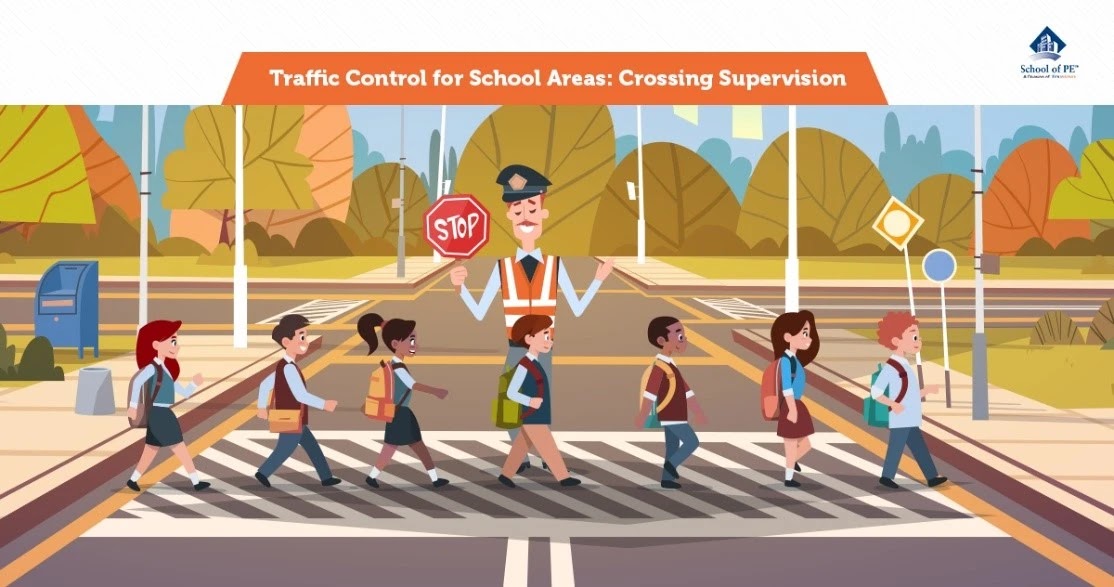Pedestrian safety is an important part of roadway design, especially in urban and suburban areas where pedestrian-vehicular flow rates and potential for interactions are high. Pedestrian safety is dependent on the public's understanding of acceptable methods for efficient traffic control, so uniformity is a must. This is especially important in the control of pedestrians, bicycles, and other vehicles in the vicinity of schools. The uniform approach to school area traffic control promotes standardized behavior amongst all road users. This is accomplished by developing a school traffic control plan. This allows for an organized review of school area traffic control needs and the coordination of school/pedestrian safety education and engineering measures according to Part 7 of the 2009 Manual on Uniform Traffic Control Devices (MUTCD).
School routes and established school crossings should be planned to take advantage of existing traffic controls. Direct crossing where there is no existing traffic control should be avoided. In some instances, children could be required to walk a longer distance to a crossing with existing traffic control. This is based on a feasibility study that includes factors such as the number of students using the crossing, the total extra walking distance, the age level of students, etc.
The frequency of gaps in the traffic stream for student crossings varies from location to location. When the delay between adequate gaps becomes excessive, students may become impatient and take chances. In these instances, adding gaps to accommodate the crossing demand should be considered. Adult crossing guards can be used to provide those necessary gaps in the traffic stream. The 2009 MUTCD states that there are three (3) types of school crossing supervision. These include adult crossing guards, uniformed law enforcement, and parent/student control. High standards for selecting adult crossing guards is essential because of their responsibility. Below are the minimum qualifications needed:
- Average intelligence
- Good physical conditions (hearing, sight, and ability to move)
- Ability to control STOP paddle
- Ability to communicate
- Ability to recognize potential danger
- Mental alertness
- Neat appearance
- Good character
- Dependable
- Overall sense of responsibility
Crossing guard uniforms consist of highly visible retroreflective safety apparel. When light hits this apparel, the light reflects back to its source so the object or person (i.e., crossing guard, law enforcement) appears brighter. The safety apparel follows ANSI (American National Standard Institute) standard performance guidelines for Class 2.

Crossing guards should not direct traffic as law enforcement. Rather, they should look for opportunities to create a sufficient traffic gap. Once they've identified and created the gap in traffic flow, crossing guards should stand in the roadway to alert road users that pedestrians are about to use the crosswalk. Vehicular traffic must stop. Crossing guards should stop traffic with a STOP paddle. This paddle is octagonal in shape with a red background and 6-inch uppercase letters and a white border, just as any traditional stop sign. The STOP paddle should be at least 18 inches in size and the word STOP should be on both sides. This paddle should be retroreflective as well.
No comments :
Post a Comment